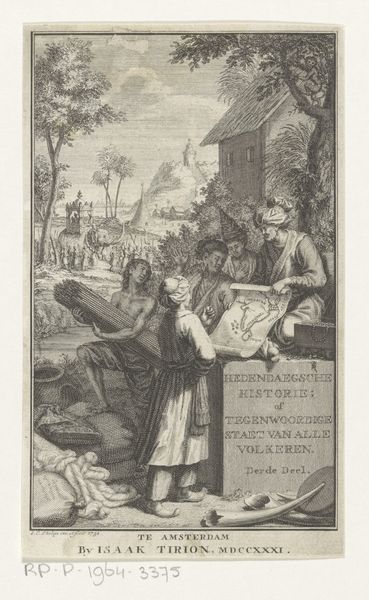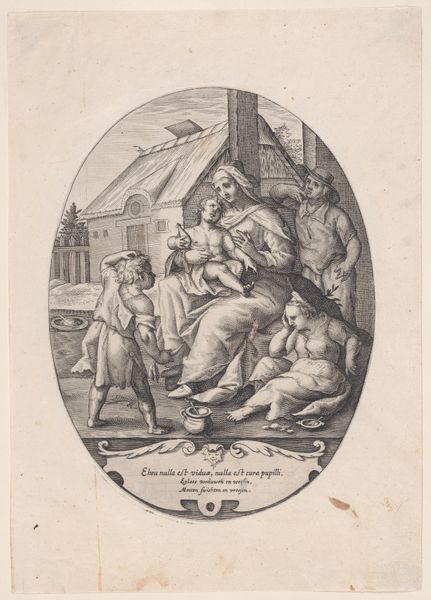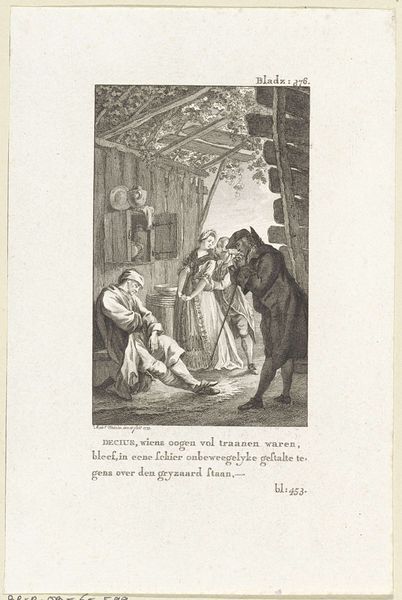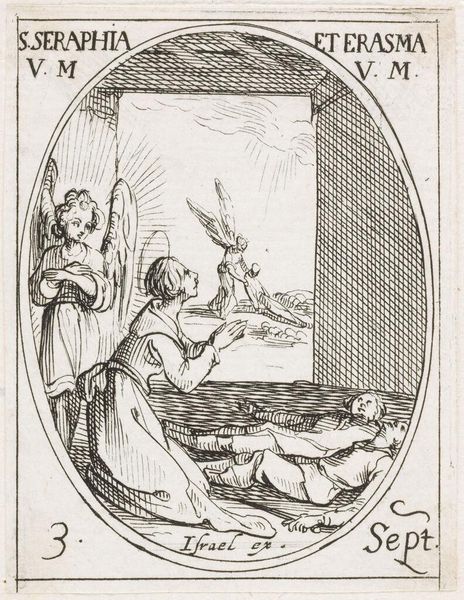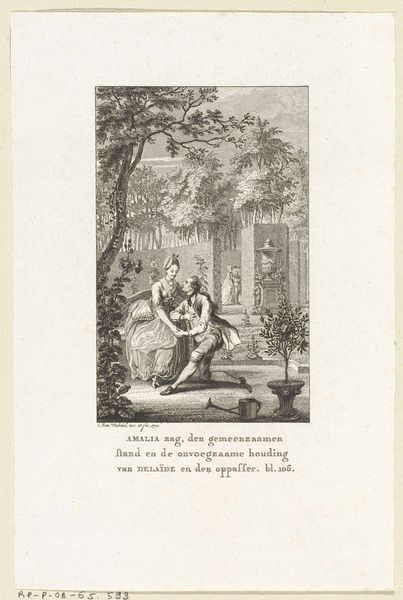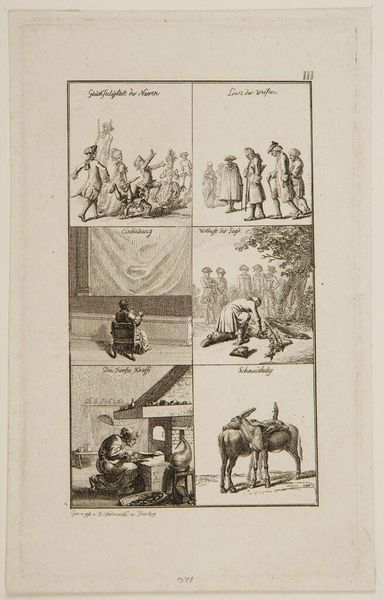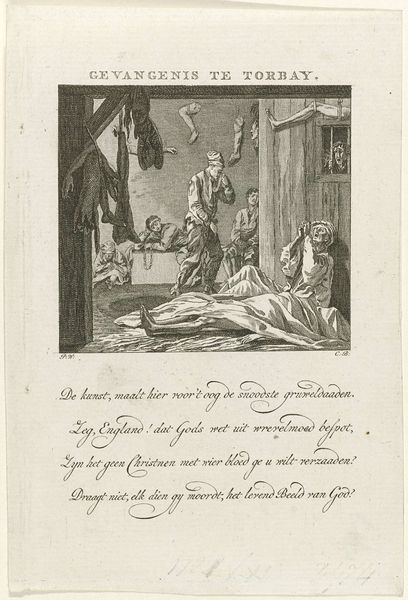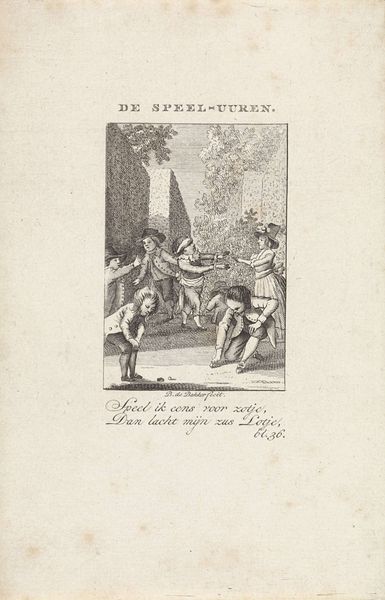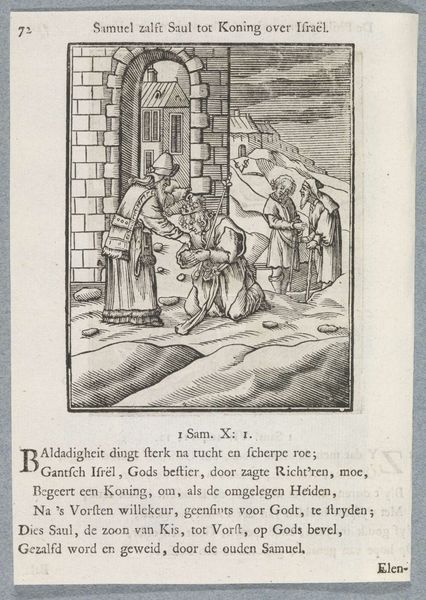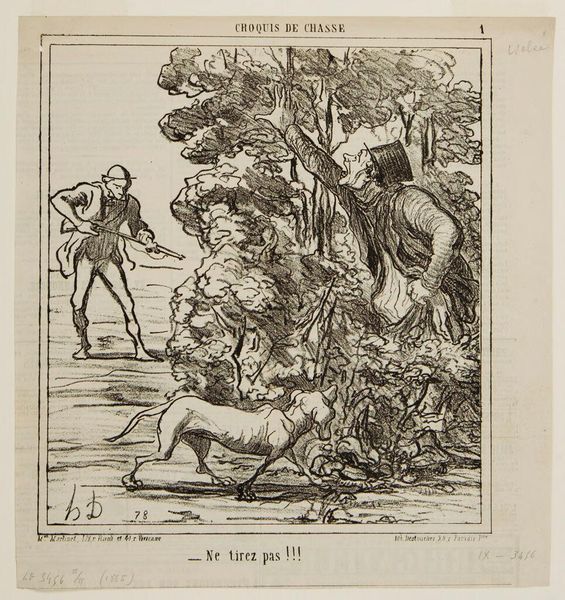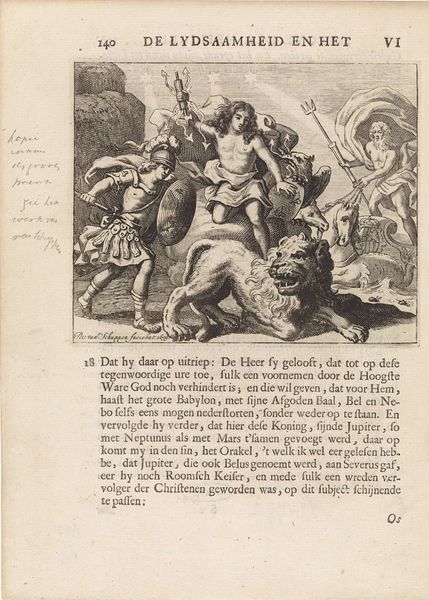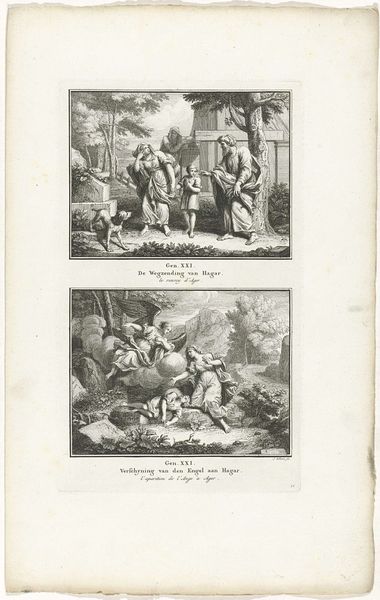
Dimensions: height 194 mm, width 125 mm
Copyright: Rijks Museum: Open Domain
This etching, made around 1780 by N. de Vries, depicts Clio, the muse of history, surrounded by putti in a vignette illustrating a military camp, drawing our attention to the themes of history and knowledge. The putti, winged cherubs, evoke classical antiquity and the Renaissance. These figures have roots in ancient Roman art, where they symbolized divine love and protection. Here, they frolic around Clio, one holding a flower. The flower is a symbol of beauty, while the act of picking it suggests the selection of historical narratives. These motifs, though seemingly innocent, carry a psychological weight. The putti represent a subconscious longing for a harmonious past, a nostalgic vision that often colors our understanding of history. Consider how the image of Cupid evolved from the classical god of love to the cherubic figures in Renaissance paintings, eventually becoming the popular image of putti in the 18th century. This evolution mirrors our shifting cultural attitudes toward love, innocence, and the idealization of childhood. The motifs of classical antiquity are in constant flux.
Comments
No comments
Be the first to comment and join the conversation on the ultimate creative platform.
